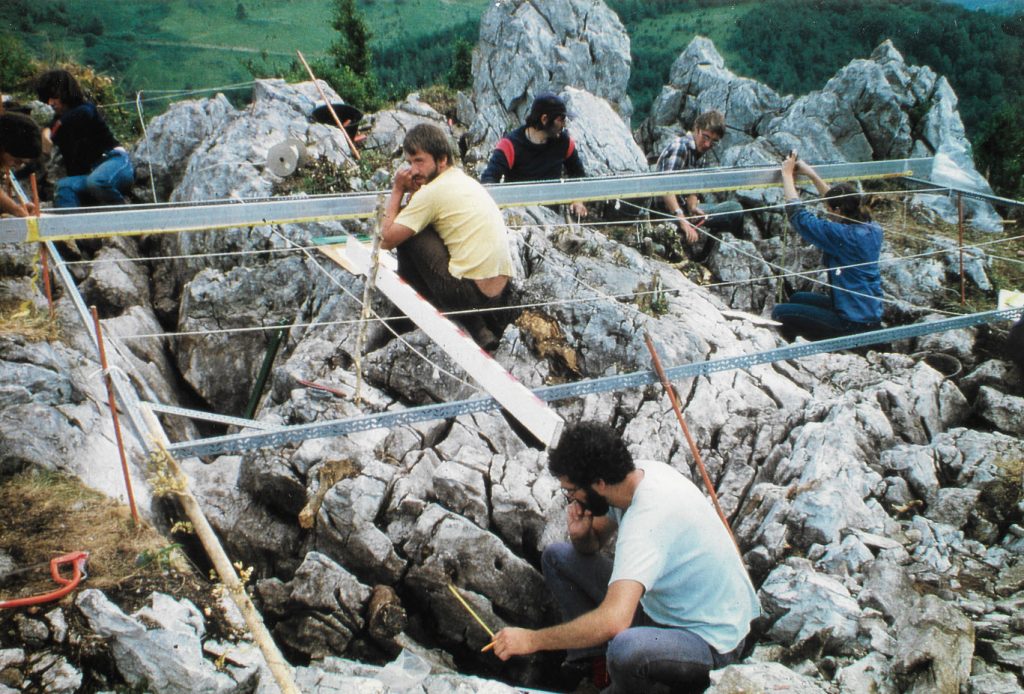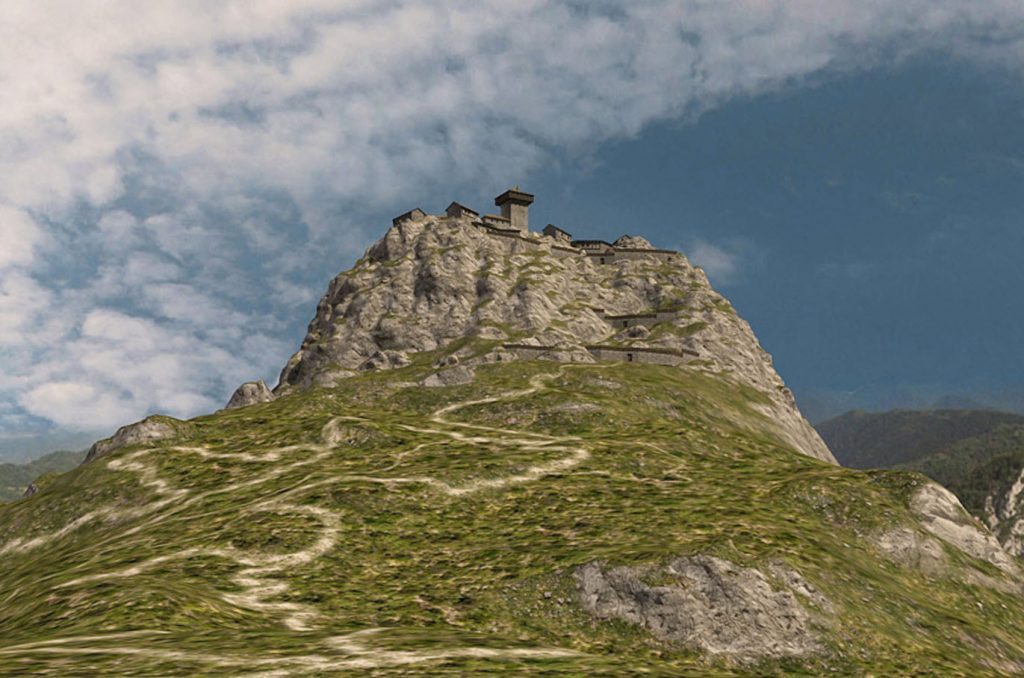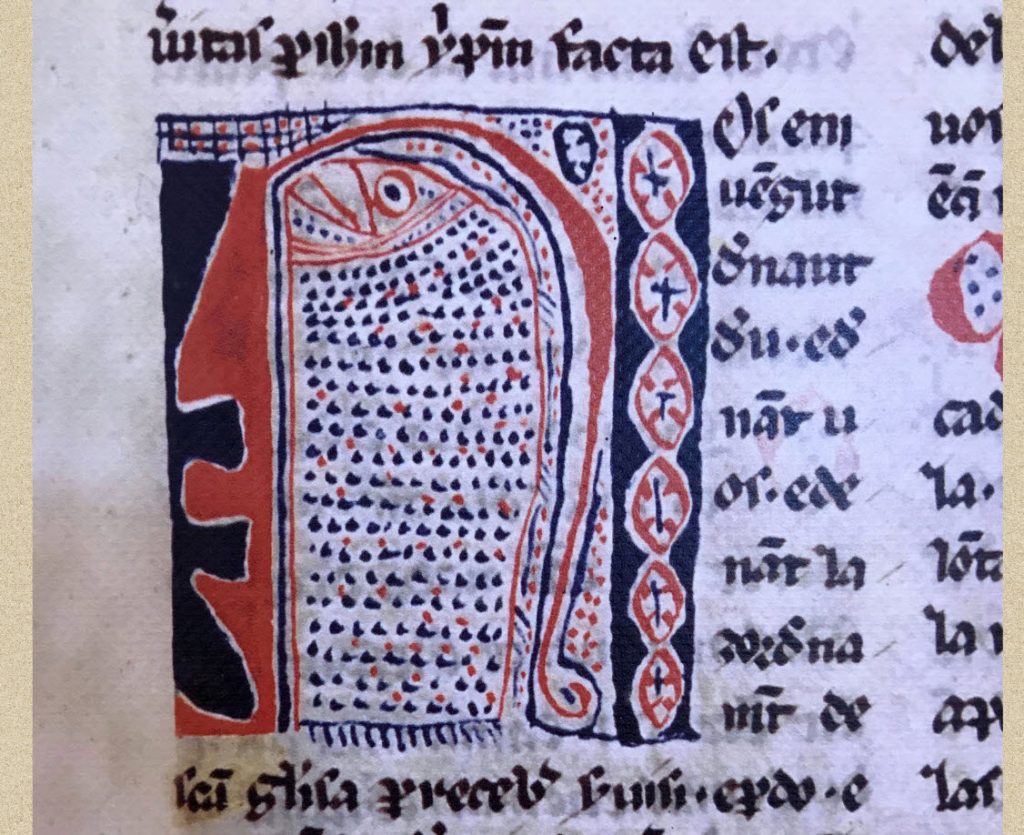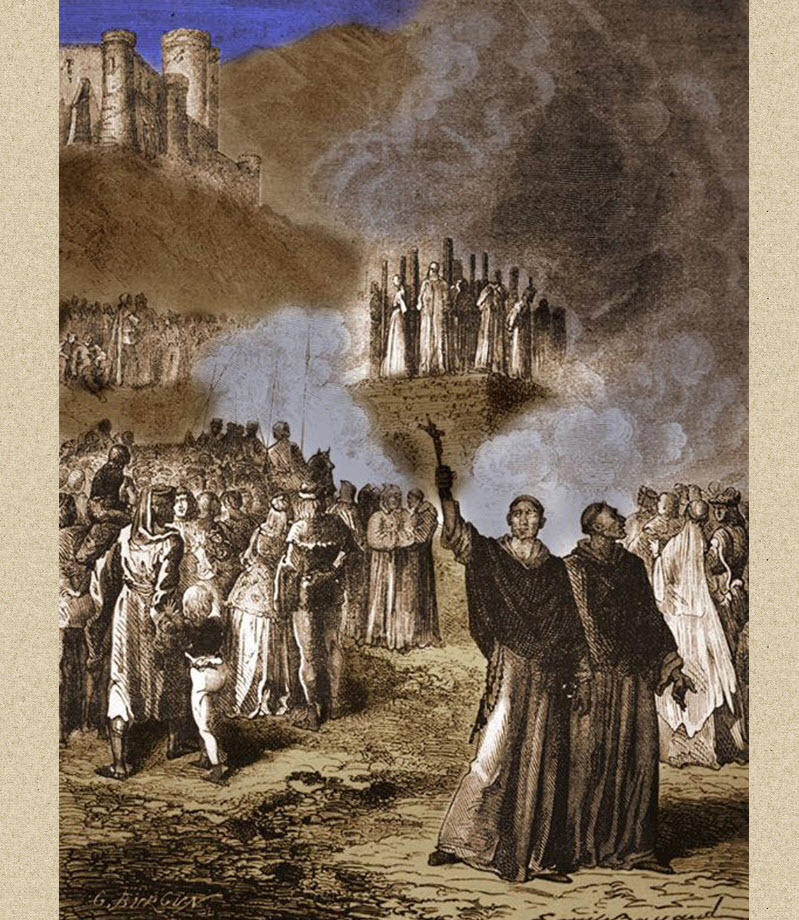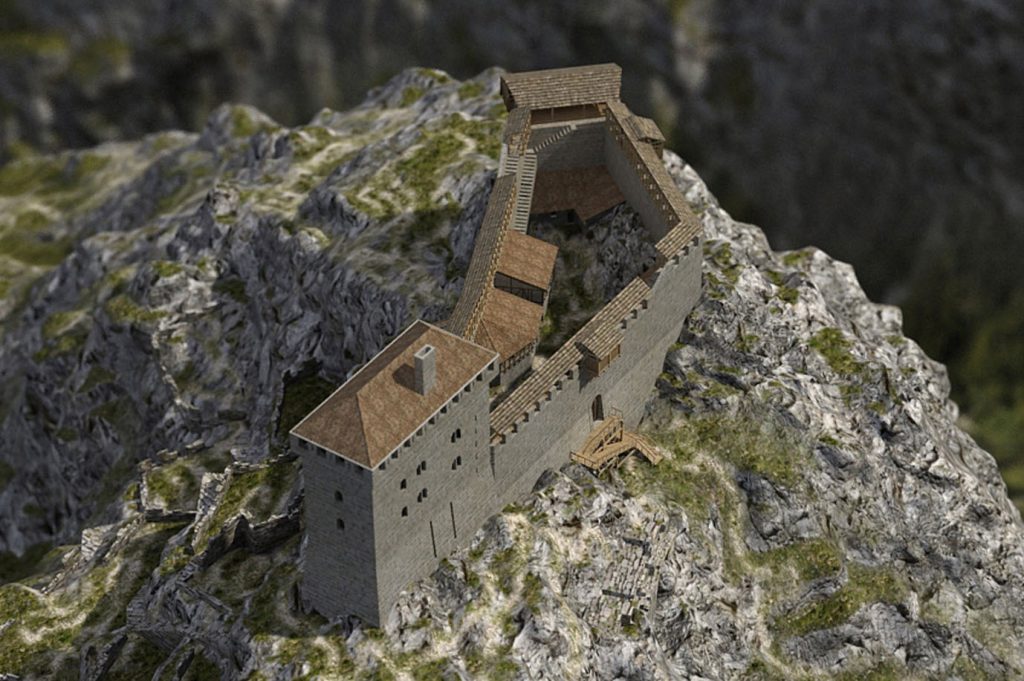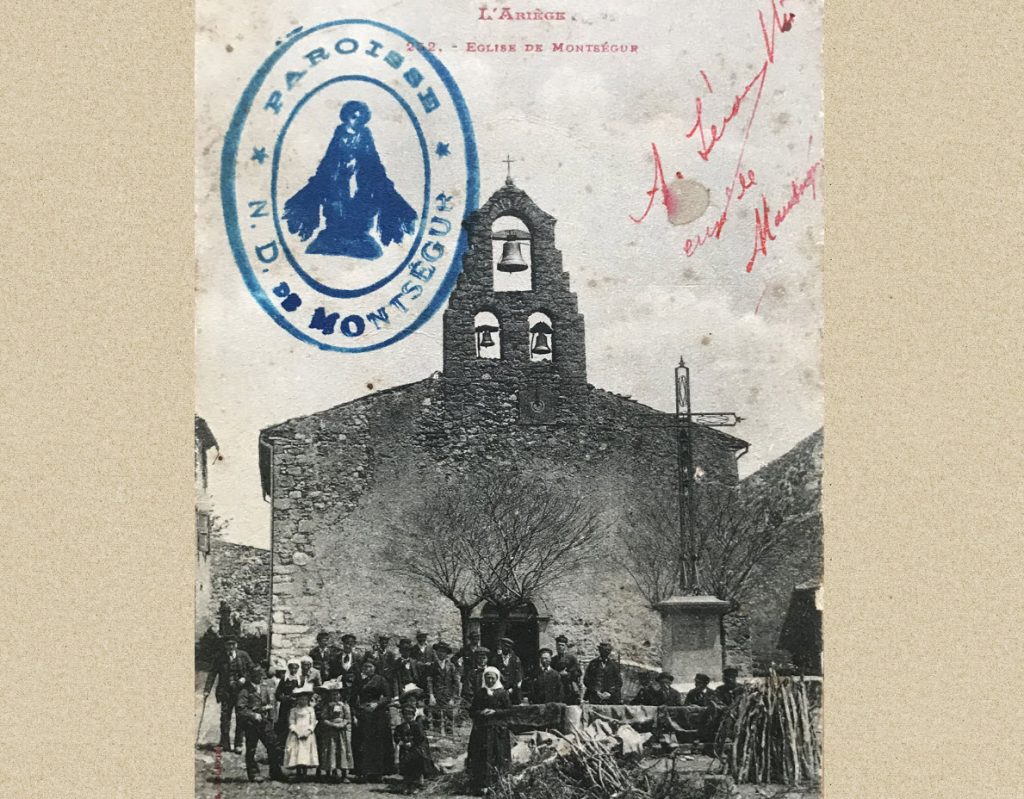The elements of the history of Montségur and its Castle that we know with certainty, were established not only from historical documents, including the archives of the Inquisition, but also from the results of archaeological excavations undertaken for several years on the site.
The castle of Montségur
Montségur I
The site seems to have been frequented since the Neolithic.
We also have discovered some clues of Roman occupations on the pog. But there is no other information to help us reconstruct the history of Montségur from the early Middle Ages until the beginning of the 13th century. At which time Raymond de Péreille, vassal to the Count of Foix, noted in this place an earlier castrum whose origin is not known. By castrum we mean a fortified construction to which are attached buildings housing mostly a civilian population.
Montségur II
Raymond de Péreille’s new castrum, called Montségur II by archaeologists, is closely linked to the history of the Cathars of Languedoc.
The Cathar religion coming from Christianity is based on two great principles: a good God and a bad God. All that is immaterial is the work of the Good, all that is material is the work of the Devil.
The Cathar religion extended over a large part of Languedoc, and at the beginning of the 13th century the Catholic Church wanted to bring back to the right path those they called “heretics”. It had no other solution than to use of force: This was the crusade against the Albigenses (sometimes improperly called Albigensian Crusade).
Montségur, seat and capital of the Cathar Church
From 1232 Montségur became the seat and capital of the Cathar Church. The castrum was densely populated with around 500 to 600 people, a mix of religious, civilians and military. To the north-east of the castle the remains of some dwellings are still visible today. These are the last witnesses of this settlement.
The siege of Montségur, 1243-1244
In 1243 Hugues of Arcis, seneschal of the king of France in Carcassonne and Pierre Amiel, bishop of Narbonne with an army of 10,000 men, sieged the fortress. The siege lasted about 11 months, until its tragic end: the surrender on March 16, 1244 where 230 Cathars, not wanting to deny their faith, were burnt at the stake.
Montségur III
After the fall of Montségur, the King of France awarded the castle to one of his lieutenants, Guy de Lévis. He remodelled its architecture. The fortress was occupied by a royal garrison until the Treaty of the Pyrenees in the 17th century.
The village of Montségur
Towards the end of the 13th century, a small community called Ourjac settled around the present village, not far from the fountain still bearing the same name.
The community did not have a church so they used the castle as a place of worship.
In the 16th century this village became Montségur and slowly developed through the 19th century to become the current village, many of the houses being partially built with the stones from the castle.
Weaving and agriculture were the main activities of the inhabitants. From the end of the 19th century the population started decreasing; there were 743 inhabitants in 1889, but no more than 592 in 1900.

